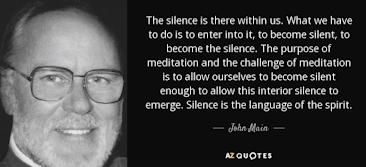What can we learn from a very fast old car?
Plenty really. I drive a Subaru WRX. Fabulous car. I was fortunate and happened to buy the 1998 model, the best looking WRX of all time. Sleek, elegant, relatively cheap, and bloody fast!
My car has just celebrated its 25th birthday, having completed over 330,00Kms. Yes 330,000Kms! And it still goes very fast!
And yes, I know that these days it is about as politically correct to admit to loving driving fast as it is to being a smoker, but it is a fact. I love speed. Always have. Never smoked :)
So this week, let’s go “Out on a Limb” once again and discover what we can learn from a very fast old car. But first, I love being still as well, so
Thought for the day
Profound and tranquil, free from complexity
Uncompounded luminous clarity
Beyond the mind of conceptual ideas
This is the depth of the mind of the victorious ones.
In this there is not a thing to be removed
Nor anything that needs to be added.
It is merely the immaculate
Looking naturally at itself
Nyoshul Khen Rinpoche
The metaphor is simple but very strong. As a fast car, to get to be 25 years old and to continue to look as good as you did in the early days, to continue to go as fast as you did in the early days; it all takes some work. Good care, regular servicing, a few running repairs, and maybe a facelift!
My WRX came with all the raw ingredients. The car looks terrific to my eye; it has beautiful lines, is compact and elegant. In many ways it looks like a modest hatchback.
But then there is this incredible turbo-charged Boxer motor that is hooked up to everything that matches. The outcome? A racing billycart. Sure the ride is a little rough, but it moves fast, handles extraordinarily well and has been incredibly reliable. I love driving this car.
But then, the truth is the car is serviced regularly by the best Subaru people I could find using only genuine parts. It has never had an accident, despite being driven very hard in its early days; more sedately of late.
It did blow up a transmission at 30K, but Subaru recognised an in-built fault and replaced it free of charge. Being automatic, the transmission did need replacing again recently.
The only other difficulty was when the failure of a minor part led to a major engine problem at around 200K and the bottom half of the engine needed replacing. And I did have it resprayed a year or so ago.
So the simple metaphor. Compare the car to the body. My body is 73 years old. Still goes quite well despite being short of one leg, one lung and most likely one kidney. But this body of mine, like the WRX, gets very well looked after.
FuelI am quite particular about what goes into it this body of mine.
The WRX would probably run on basic unleaded; splutter along at least; but it goes best on Premium and that is also better for its engine.
My body, like the WRX, is a combustion engine.
You put things into it, it burns them up and it goes.
The WRX has a relatively simple combustion engine and I am very particular about what I put in its petrol tank.
My body has an exquisitely complex combustion engine.
It makes logical sense to be even more attentive to what goes into my own tank.
Why not use the best? Why not eat the best?
Regular servicing
For me, regular meditation is like servicing. Worth doing daily. Going on retreat is a more deliberate form of servicing, as is having a regular massage, taking time out in the garden or going for a walk. Regeneration time. When I need to, which is often, I want to know that everything has been done, everything is ready, so that I can be at my best.
Why not be at your best?
Respraying
This seems to be unknown or overlooked by many, but in my view, good food, really good food, is way more effective then a facelift. Eat consistently well and skin tone is good, wrinkles smooth out and an inner glow emerges.
Why not look at your best?
Actually, I treat my body better than the WRX.
I like to think I treat it like a Formula One racing car, where everything is taken seriously, but there is a lot of fun involved.
That attitude certainly helped me to recover from a very difficult cancer.
And these days, while I am not fixated, I am fairly diligent, and this attitude helps me to make the most of the bits that I do have, to live and enjoy life to the full, and to make the most of what it is that I have to offer to others.
And finally, along with the WRX’s milestone 25th birthday next month, I have no demerit driving points against my name. Not sure as the years advance if I am becoming more politically correct or just more careful?
Love that car!
RELATED BLOG
What food goes into your tank?
Bottom line comfort
I am often asked where to obtain a good meditation cushion.
Here is a link to where you can order great Zafus (buckwheat filled, round cushions) and other meditation gear...
They also have buckwheat refills for well used, flattened Zafus that need replenishing.







